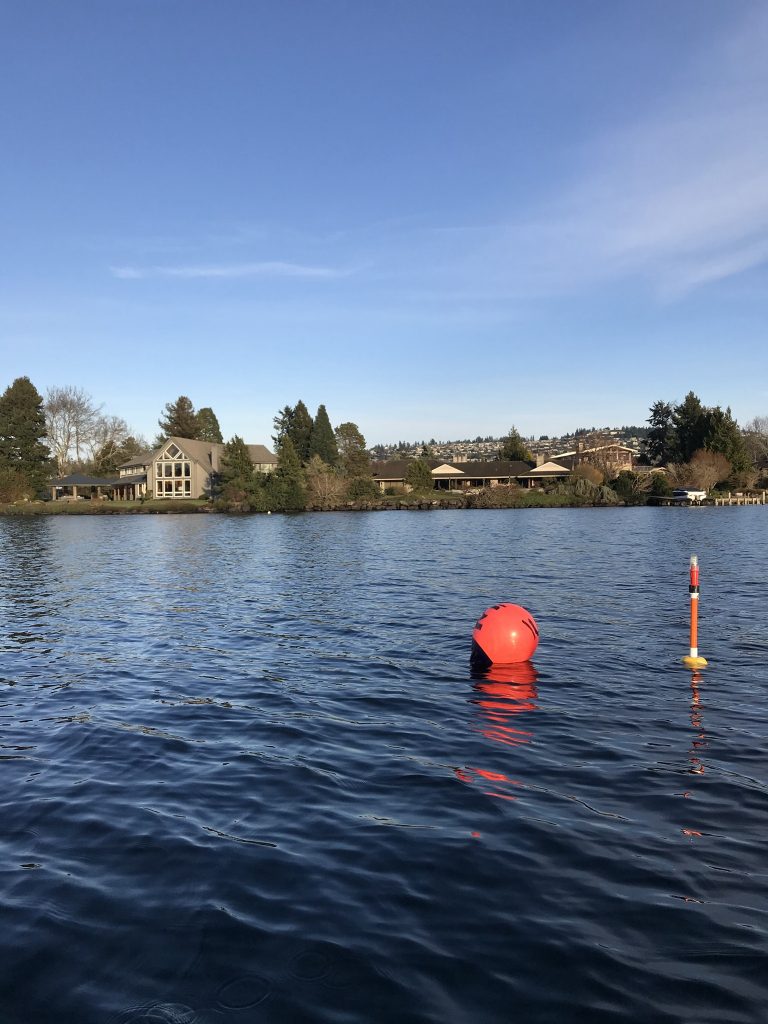
BUOY ON LAKE WASHINGTON
(courtesy of KAI WIKSTROM, Northwest Sportsman)
The Muckleshoot Indian Tribe has recently deployed numerous nets, with orange buoys and flashing lights, along the shores of Laurelhurst, several near the Beach Club, all the way up to Windermere.
Neighbors have reported that they saw a boat pulling up the nets, approximately 200 feet apart, some containing fish, and then slightly moving them to another location in the same general area.
The nets are for the tribe's "warmwater test fishery" gauging predator fish populations and what they consume, according to Northwest Sportsman.
In March, the nets were deployed along the east side of Lake Washington. The project goes through next month rotating around the Lake. The tribe filed a federal permit and agreement that it would not harm ESA-listed fish, and that it is being done independently of Washington Department of Fish and Wildlife, according to the article.
A bass angler said in the the Northwest Sportsman article:
These gill nets are a hundred yards long, and strategically placed in areas with high fish traffic. These nets need to be removed immediately, and will have an adverse effect on not only the fishery, but the ecosystem itself. Gill nets destroy everything they touch, and will undoubtedly snag anything that swims by them, including many fish species, bird species, turtles, frogs, beavers, and everything else in the Lake Washington ecosystem.
A notice filed this week by the Muckleshoot Tribe provides some details on the effort, including that netting began yesterday and will close this Friday, then recur Mondays through Fridays. Up to six boats are allowed to work a maximum of 24 3.5- to 6-inch-mesh gillnets with a max length of 300 feet each. Tribal biologists and enforcement officers will monitor it.
Chillingly, two northern pike were reportedly caught in the nets in the first day, according to a state biologist.
Here is the Northwest Sportsman article written in March.
No comments:
Post a Comment